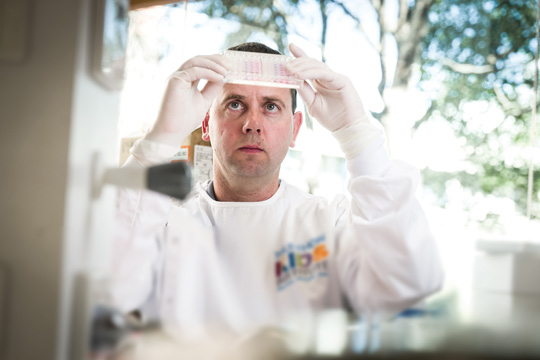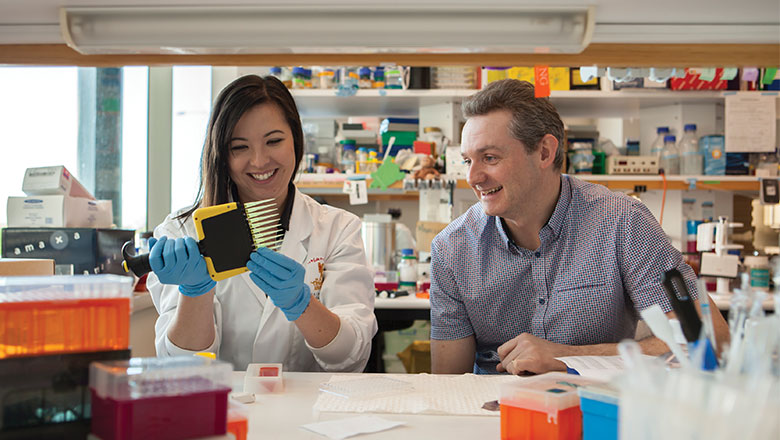Search
Research
Risk of childhood acute lymphoblastic leukaemia following parental occupational exposure to pesticidesRisk of childhood acute lymphoblastic leukaemia following parental occupational exposure to pesticides.

News & Events
Researchers unlock potential new cancer weaponIn an exciting breakthrough for cancer treatment, a new weapon to enable the immune system to combat the disease may have been unlocked.

News & Events
Global war on brain cancerDr Nick Gottardo and Dr Raelene Endersby from The Kids Research Institute Australia are the driving force behind an innovative, global action group on child brain cancer.
News & Events
Study finds folate protects against childhood brain tumoursA national study led by Perth's Telethon Institute has found that folic acid supplements before and during pregnancy reduces the risk of childhood brain tumours
News & Events
New insight into treatment options for rare childhood brain tumour, 2011 Media Release, Telethon Institute for Child Health ResearchA new study led by Australian researchers has outlined for the first time the best treatment options for children suffering from meningioma
News & Events
Continuing the cancer fightWork by the Institute's Division of Children's Leukaemia and Cancer Research has been recognised with three research grants from the Cancer Council of WA.
News & Events
Apache Energy joins Telethon Institute in cancer research partnershipApache Energy and the Telethon Institute for Child Health Research today signed a two-year partnership
News & Events
New study examines vacccine to prevent cervical cancerThe Telethon Institute for Child Health Research today announced a new study investigating a vaccine to prevent infection of Human Papilloma Virus (HPV).
Research
Current gaps in knowledge and future research directions for Aboriginal and Torres Strait Islander children with cancerPaediatric cancer is the leading cause of disease-related death in Australian children. Limited research focuses on cancer in Aboriginal and Torres Strait Islander children. Although there appears to be a lower incidence of cancer overall in Aboriginal and Torres Strait Islander children compared with non-Indigenous children, a high proportion of Aboriginal and Torres Strait Islander children are diagnosed with acute myeloid leukaemia.
Research
Exploiting temporal aspects of cancer immunotherapyMany mechanisms underlying an effective immunotherapy-induced antitumour response are transient and critically time dependent. This is equally true for several immunological events in the tumour microenvironment induced by other cancer treatments. Immune checkpoint therapy (ICT) has proven to be very effective in the treatment of some cancers, but unfortunately, with many cancer types, most patients do not experience a benefit.
